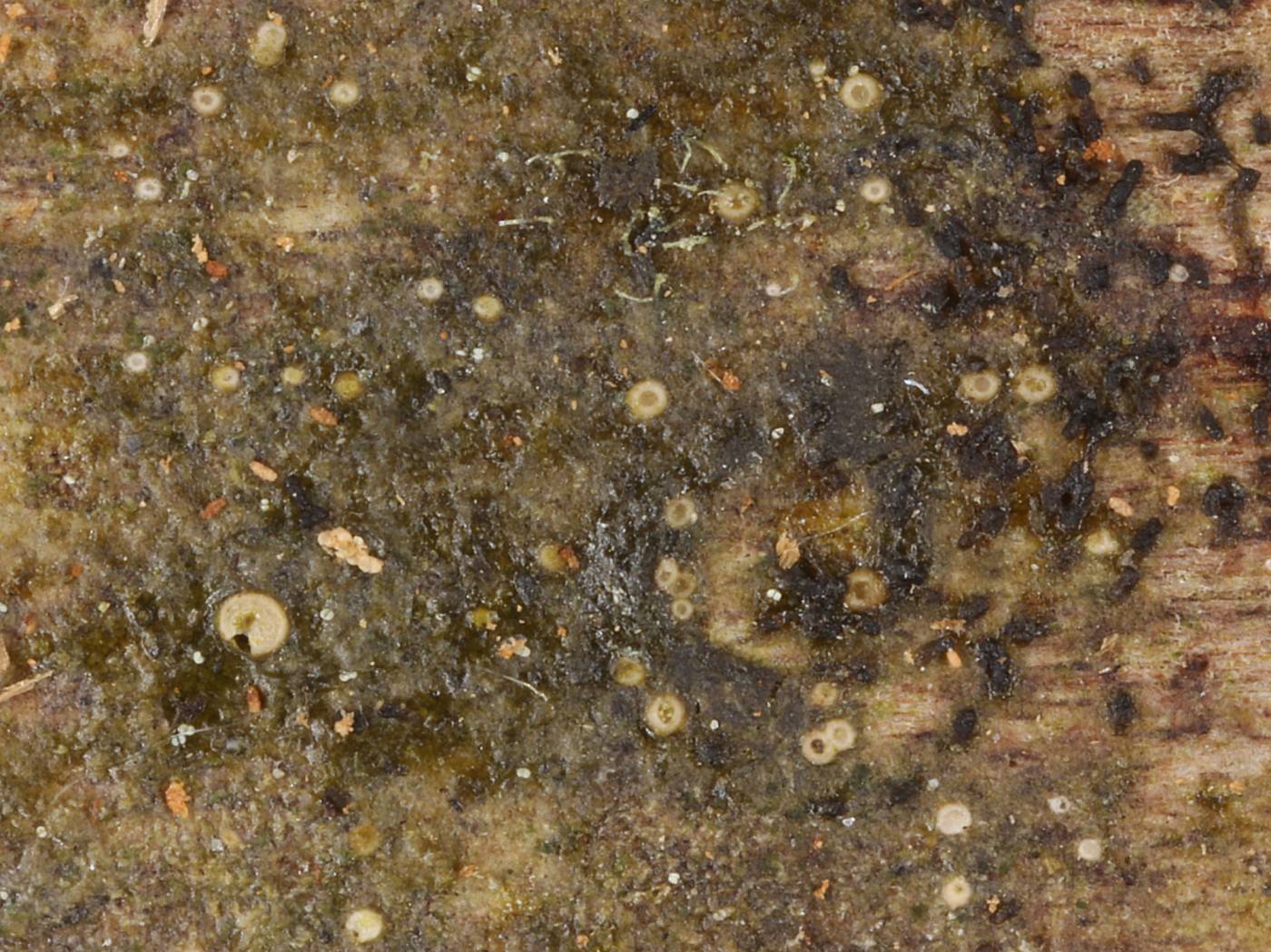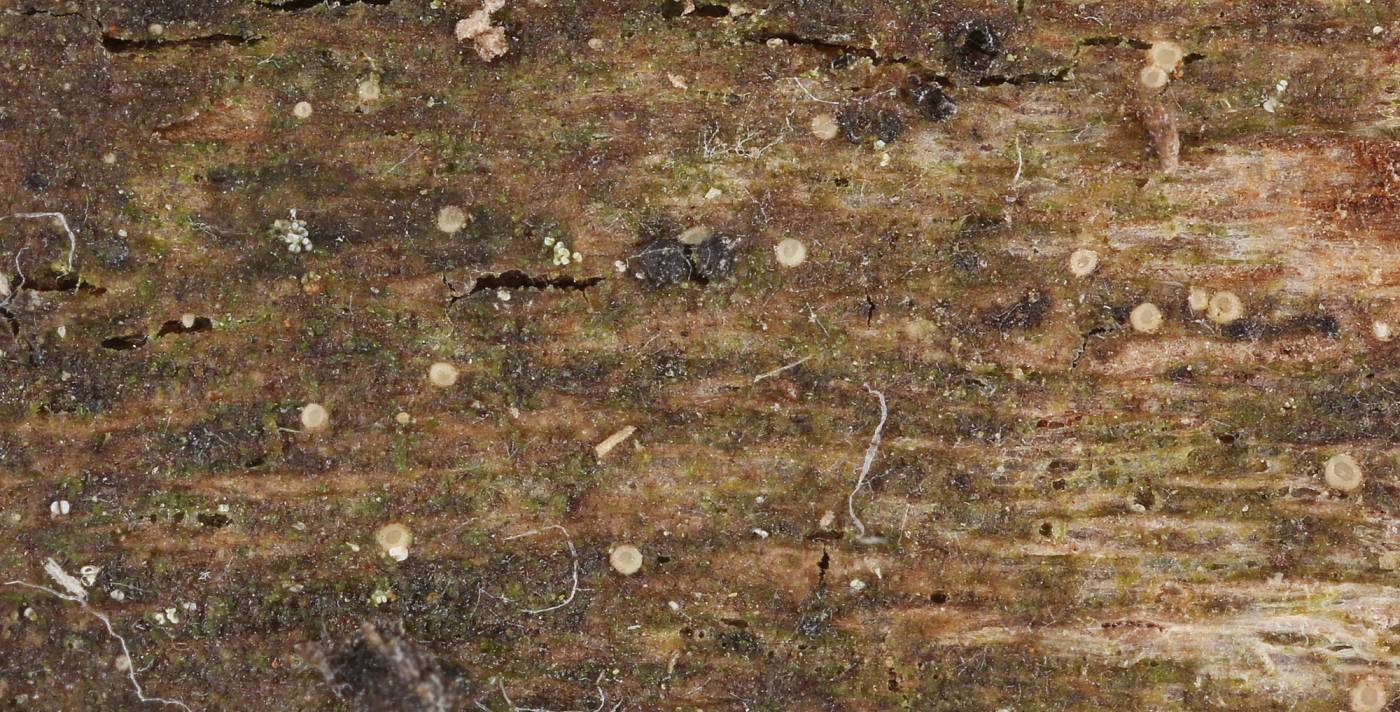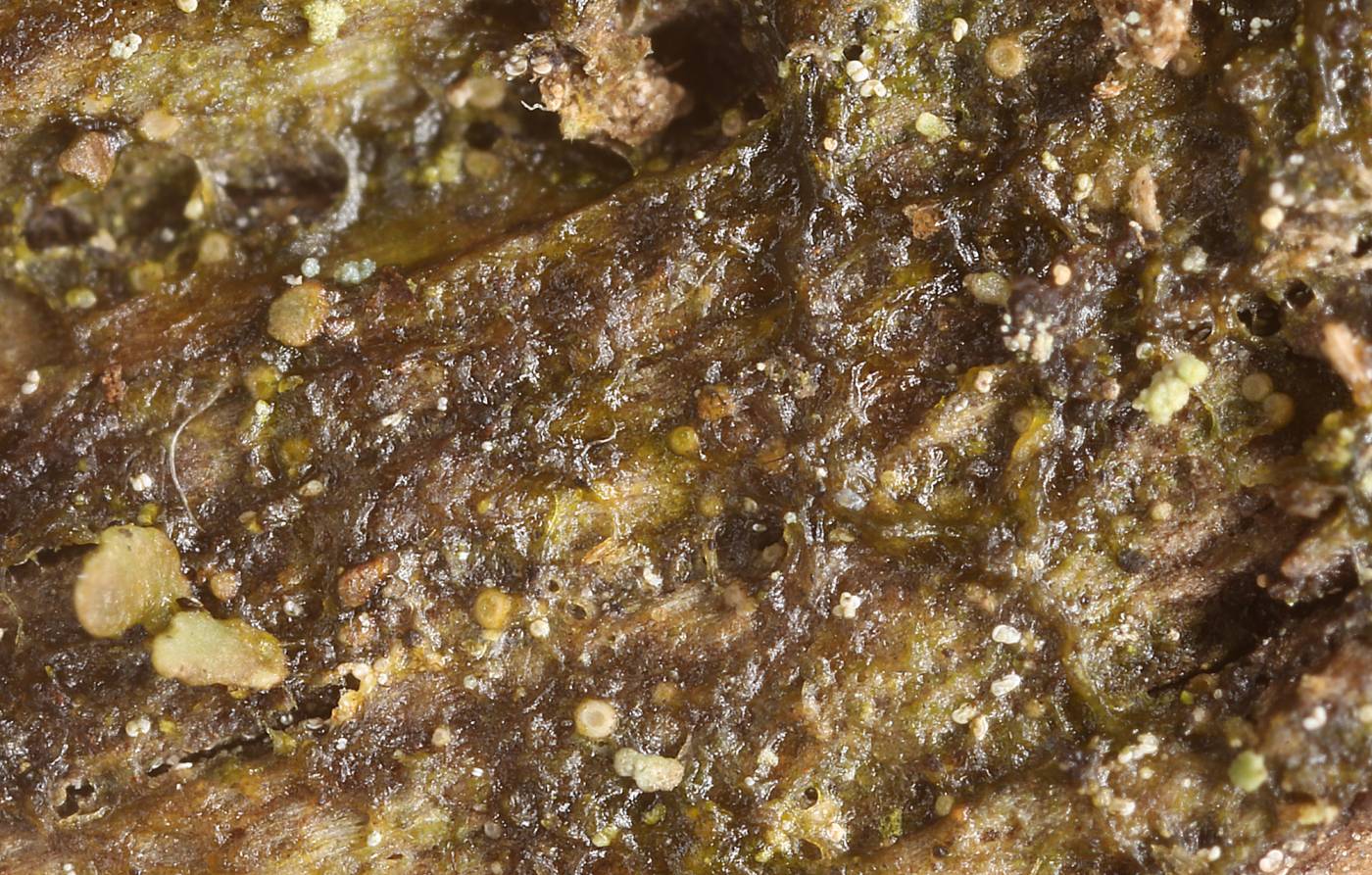One of the most common species of lignicolous lichens in the Czech Republic, occurring in various types of commercial and natural forests, as well as in parks. However, especially in the past, it was overlooked for its mushroom look resembling a small discomycete. It often occurs in similar pioneer epixylic synusiae as the species A. celata, accompanied by other pioneer crustose microlichens, non-symbiotic green algae and leafy liverworts. The usual substrate is moist, still undecomposed wood of mainly lying trunks, but also stumps of conifers or deciduous trees. It rarely passes on bark (tree bases, branches), polypores, etc. Infrequently, it has been recorded on an inorganic substrate (sandstone). It is widespread in the temperate and boreal zone of the northern hemisphere. Absconditella lignicola is markedly rarer in the oceanic and Mediterranean regions of Europe. Its probable optimum is mainly in northern boreal forests.
Recently, a very similar species, Absconditonia sublignicola, was described from the Netherlands (Suija & van den Boom 2023). It differs in the cellular structure of the exciple (hyphae in parallel in A. lignicola), and by having smaller ascomata (0.05–0.15 mm vs. 0.1–0.2 mm) and ascospores (9‒12 × 4‒5 µm vs. 10–15 × 4.5–6.5 µm). This lichen very probably occurs in the Czech Republic as well. According to the data from environmental samples, A. sublignicola is significantly more abundant in Czech forests than A. lignicola (Vondrák et al. 2024). It is therefore very likely that a substantial part of the Czech records of A. lignicola is related to this name.
Literature: Suija A. & van den Boom P. P. G. (2023): Phylogenetic relationships, taxonomic novelties, and combinations within Stictidaceae (Ostropales, Lecanoromycetes, Ascomycota): focus on Absconditella. – Mycological Progress 22: 46 [12 p.] Vondrák J., Svoboda S., Malíček J., Šoun J., Košnar J., Svensson M., Timdal E., Machač J. & Palice Z. (2024): Combining environmental DNA data and taxonomic surveys provides an unprecedented understanding of lichen diversity and accelerates the discovery of new species. – Preslia, accepted.
taxonomic classification:Ascomycota → Lecanoromycetes → Ostropales → Stictidaceae → Absconditella
Red List (Liška & Palice 2010):LC – least concern
Occurrence in the Czech Republic
All records: 597, confirmed 416. One click on a selected square displays particular record(s), including their source(s).


